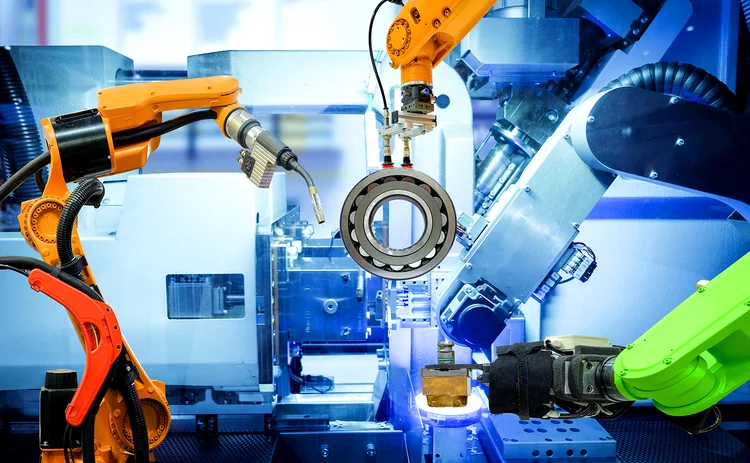
This article was paid for by a contributing third party.More Information.

Asia embraces intelligent automation

Asia’s adoption of new tools and processes has gained significant momentum, with increased automation now a primary focus for many financial firms. Paul Worthy, head of Japan at Tradeweb, explores how this change has come about, and how firms can use the Tradeweb Automated Intelligent Execution tool to streamline and automate their workflows
It is a long-held market assumption that technological innovation in financial markets migrates from west to east, starting in North America, moving first to Europe before eventual adoption across Asia. While the direction of travel may be unchanged, we have observed a marked acceleration in Asia’s embracing of new tools and processes when it comes to automated solutions. In particular, market participants have become highly receptive to automating their fixed-income transaction flows, whether inbound, outbound or within Asian markets. Following a successful roadshow in conjunction with Asia Risk, the first Asia-based users of our Automated Intelligent Execution (AiEX) service, went live in September and the pipeline for the coming months is highly promising.
High interest levels among local firms, as well as within the Asian trading operations of global institutions, are encouraging. The region’s asset managers’ reputation for caution when adopting new processes and technologies is well established, but this is not a hard and fast rule – especially when the outcome is increased efficiency of regulatory compliance.
Evolving best practice
In a number of jurisdictions – notably Japan – it has long been common practice for buy-side dealing desks to physically document their adherence to best execution on a post-trade basis, with all the delays, errors and risks that manual processes can entail. With trades executed via Tradeweb AiEX, this is no longer necessary, because compliance with local execution rules and regulations can be built into the automated process.
Furthermore, Tradeweb works closely with fixed-income trading teams to identify which transactions to automate – by size, maturity, complexity, and so on – and the parameters required to ensure optimum outcomes, such as the number of counterparties approached via the automated request-for-quote process, and time windows for responses, whether automated or manual.
Typically, most AiEX users start by prioritising smaller trades in highly liquid markets – such as US Treasuries, European or Japanese government bonds – because these transactions rarely require application of the trader’s expertise and are increasingly subject to automated responses from liquidity providers. However, many are keen to soon expand to more strategic uses of automation, perhaps by increasing trade size or moving into corporate credit or other standardised instruments. In cash fixed income alone, 18% of all trades were executed via AiEX, where available in the year to date.
We have seen this adoption pattern within global investment institutions that are looking to leverage benefits in their Asian trading activities once they have been demonstrated in the western hemisphere. But the appetite of local firms – including in Japan where they are keen to optimise both the compliance and performance advantages of intelligent automation – has come as a pleasant surprise.
Enhancing flexibility
A further aspect of intelligent automation of particular relevance to Asian trading desks – especially when trading in large size – is flexibility over timing of trades. With liquidity in European government bonds relatively weak during Asian trading hours, for example, the execution quality of a Singapore‑based wealth manager is improved considerably if its traders can schedule a trade during European trading hours. Similarly, the ability to preload smaller trades in advance of a portfolio rebalancing can help improve execution quality by focusing human traders’ attention on the trades on which they can have the most positive impact.
Regardless of geography, installation can be a challenge for all trading applications. But a key reason for the rapid uptake of AiEX is the relative simplicity of integration – only incremental work is required for order management system users to add AiEX to their Tradeweb interface.
In contrast to the speed of AiEX installation, however, Tradeweb encourages clients to spend as much time as necessary refining their approaches to intelligent automation in its test environment. Whether to ensure compliance of automated processes with local rules or to analyse execution outcomes based on tweaking parameters and market conditions, testing is a critical function of the Tradeweb consultation process. Once live, traders are able to quantify transaction costs using the Tradeweb proprietary transaction-cost analysis tool. Feedback from this same application can be used to iterate and refine execution rules in accordance with clients’ own best-execution policies.
Conclusion
Reasons for enthusiasm surrounding AiEX in the Asian market are abundant, and many of the attractions of automation are universal. All asset managers face increasing pressures to optimise their trading operations, and ensure cost-effectiveness, accuracy and scalability to underpin enterprise-wide efforts and boost competitiveness in a fast-evolving and challenging landscape.
As ever, Tradeweb is focused on supporting efficient, effective trading by working closely with clients to support more streamlined and automated workflows.
Download this feature in PDF format
Sponsored content
Copyright Infopro Digital Limited. All rights reserved.
As outlined in our terms and conditions, https://www.infopro-digital.com/terms-and-conditions/subscriptions/ (point 2.4), printing is limited to a single copy.
If you would like to purchase additional rights please email info@risk.net
Copyright Infopro Digital Limited. All rights reserved.
You may share this content using our article tools. As outlined in our terms and conditions, https://www.infopro-digital.com/terms-and-conditions/subscriptions/ (clause 2.4), an Authorised User may only make one copy of the materials for their own personal use. You must also comply with the restrictions in clause 2.5.
If you would like to purchase additional rights please email info@risk.net